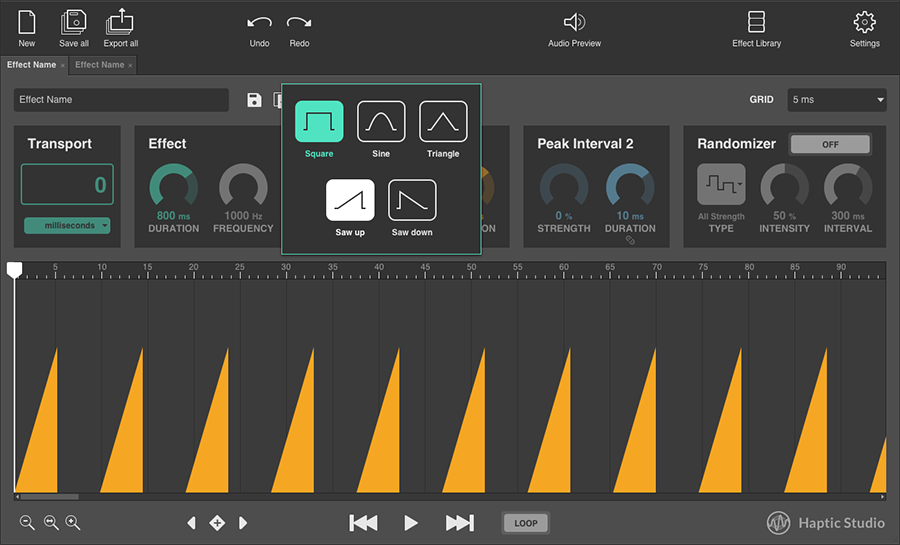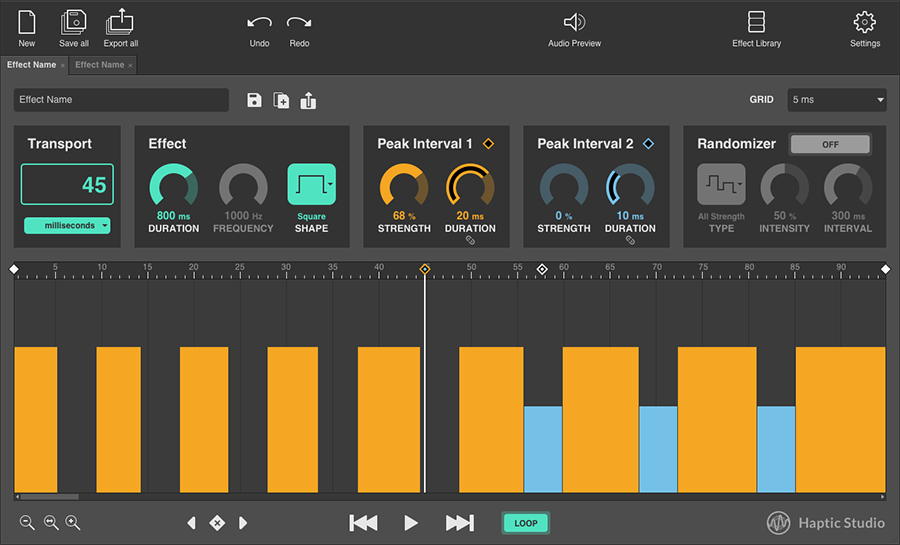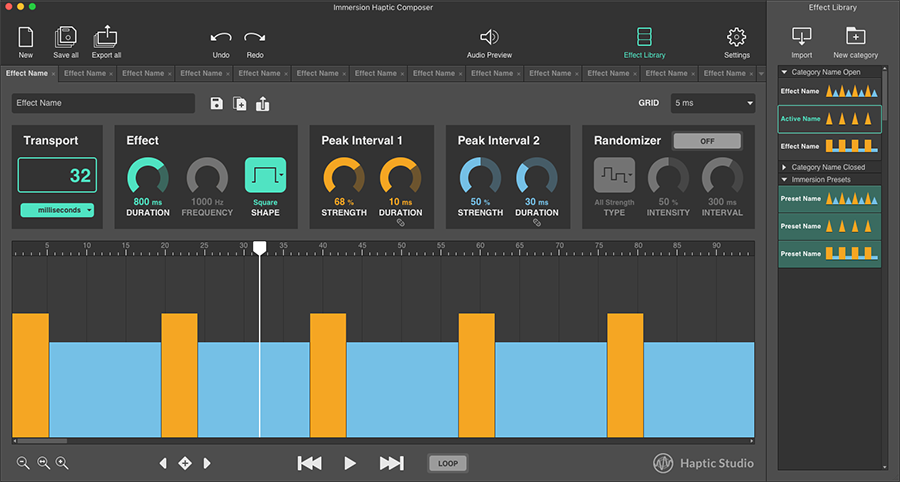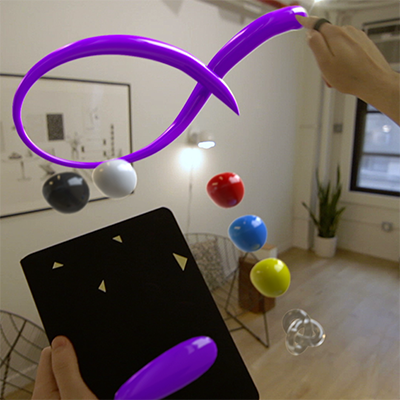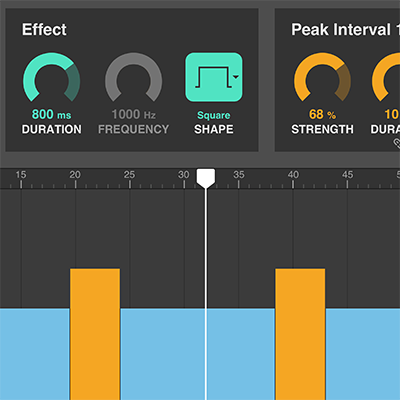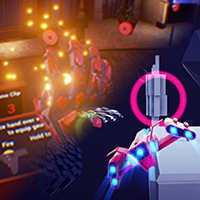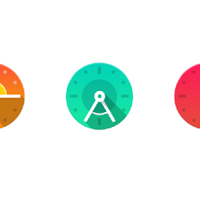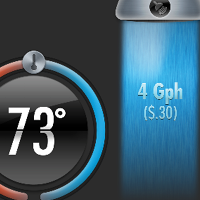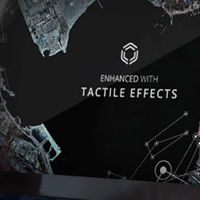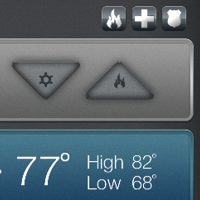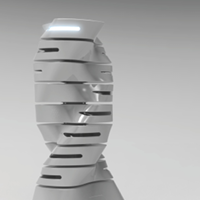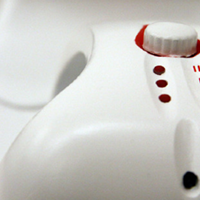Haptic Studio 2
-
- Immersion Corp
- Adobe MAX 2017
- OSX and Windows
- 2017
Audio Synthesis for Haptics
Haptic Studio is a waveform generator that allows a user to quickly create complex haptic textures in seconds. Effects can be saved into a preset library or drag-and-dropped into any editor environment that supports multiple audio tracks. With advanced features like the interpolator, creating complex effects that could take tens of minutes to fine tune can be completed in seconds. This tool was showcased and announced at Adobe MAX 2017.
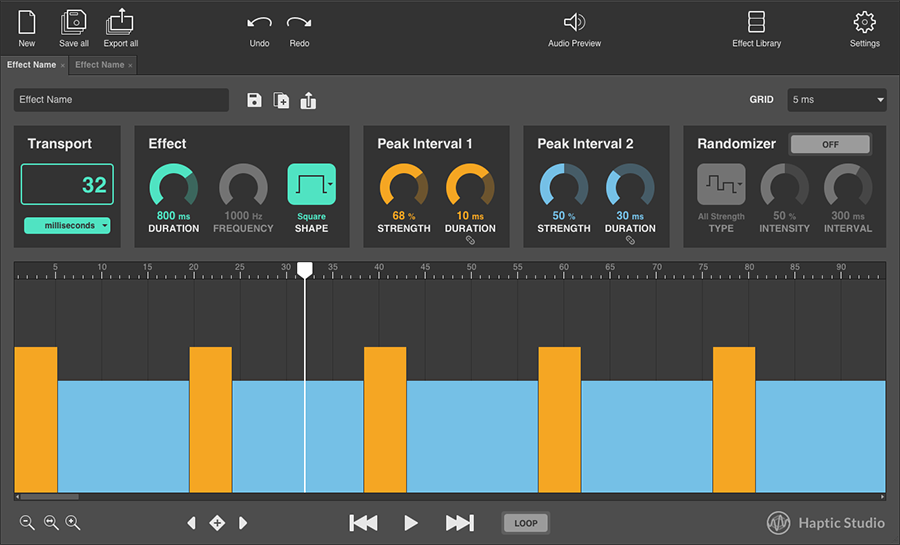
The need for this tool arises from the content workflow's heavy reliance on the Tone Generator in Pro Tools. In addition to the goal of enabling haptic creation for editor environments without a built-in tone generator, I desired to address several pain points that existed in the texture creation process.
Challenges
One of the main challenges with this project was the absence of playhead sync: moving the playhead in this tool will not impact the placement of the playhead in a user's chosen editing environment. As a result, I placed emphasis on customization of texture over fine grained control of strength, as this would be much easier to control on the context of an editing environment using built-in volume automation control. An additional challenge was the single file and track limitation, the need to move effects from this tool to another environment without losing the ability to iterate, and to enable quick tempo and texture changes.
Features
There are three key features of texture control: duration, shape, and peak interval control. Shape will impact base texture, but the majority of texture control will come from strength and duration values in the peak interval controls. Control of a peak interval 2 is an innovation that came out of this tool being a one-track solution. In previous workflows, the design of textures with varying smoothness (interleaved strength changes) required at least 2 audio tracks to control. Peak interval 2 allows for quick control within a single track (and file), overcoming the potential constraint in editor software for routing limited audio track to the haptic output device. For simple textures, the durations of both peak intervals can even be linked to the same value.
The ability to keyframe the peak intervals, interpolating between the keys, enables quick tempo changes that can easily be refined. An added randomizer can be used to aid quickly generating chaotic textures, important for elements like explosions, with the press of a button. With the incorporation of a library option, effects can be easily saved, stored, and shared, allowing a designer (or more) to keep what works well and discard what doesn't through multiple projects.
